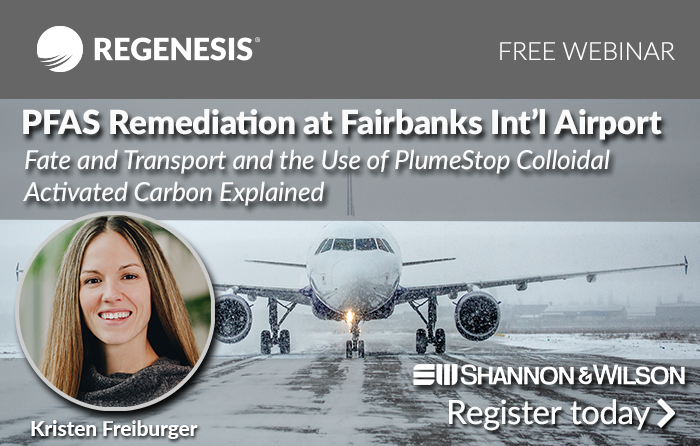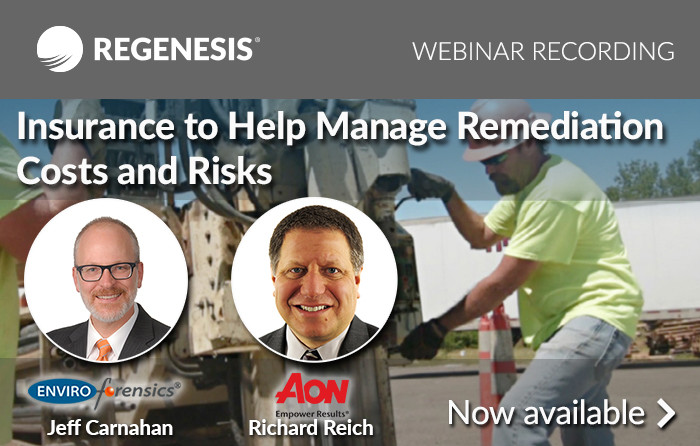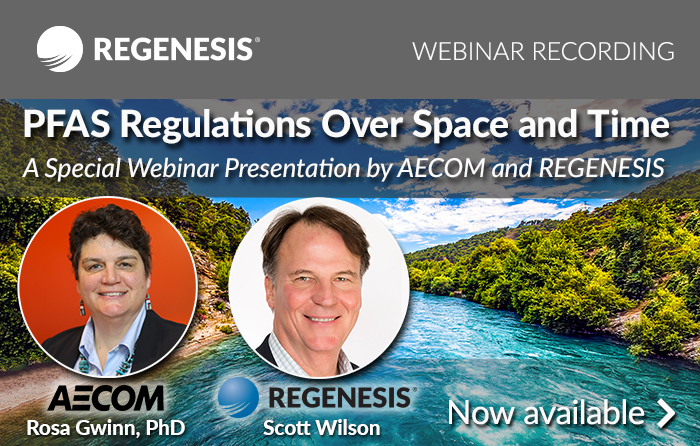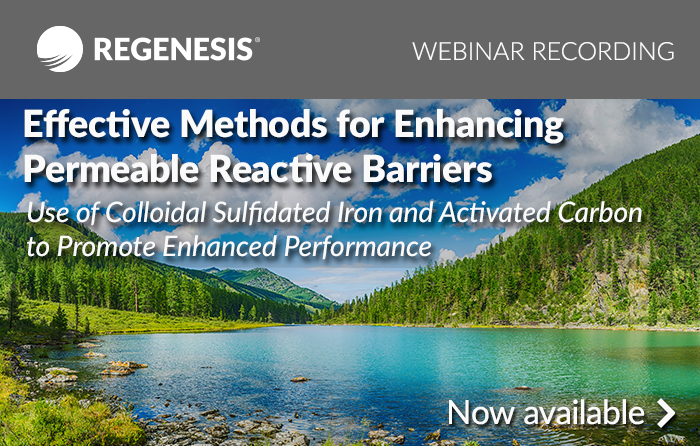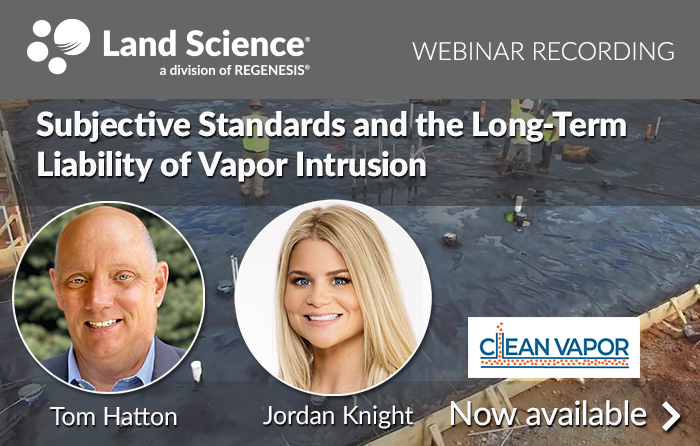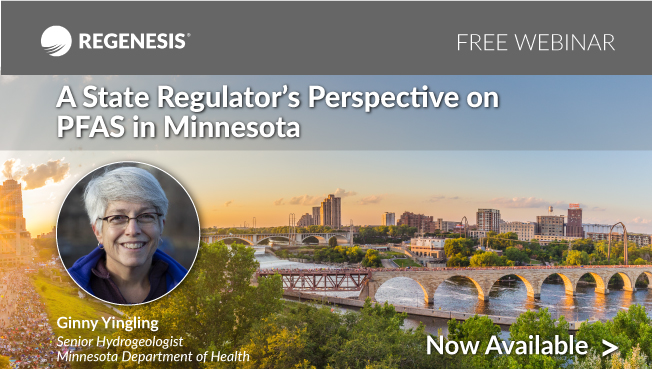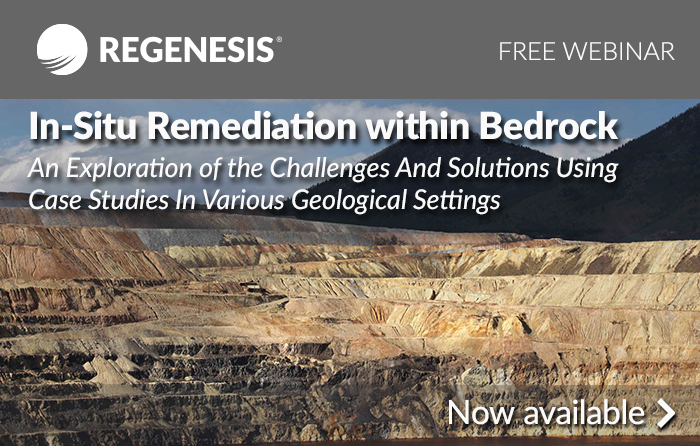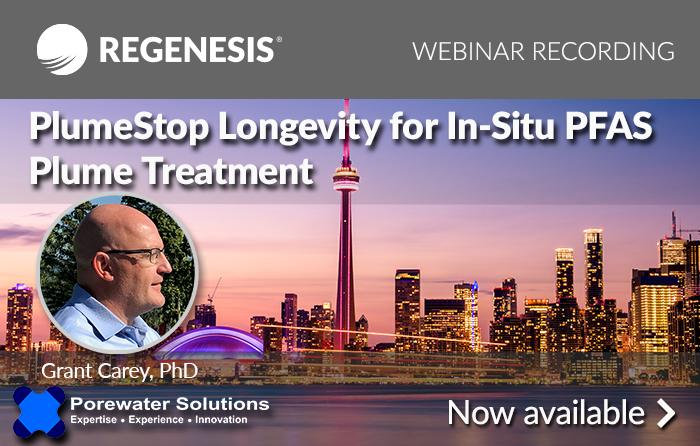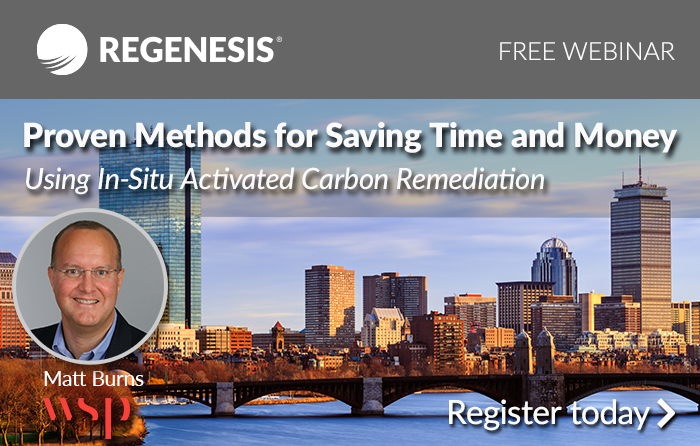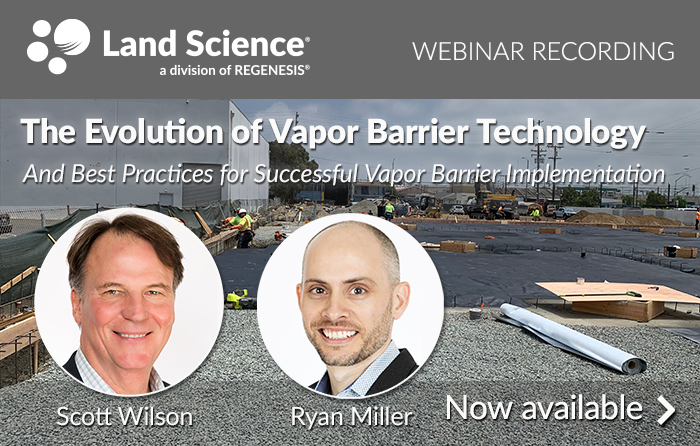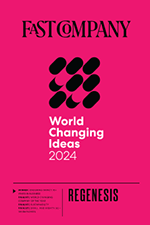PFAS Remediation at Fairbanks International Airport: Fate and Transport of PFAS and the Use of Colloidal Activated Carbon
In this webinar we were pleased to have as a special guest speaker Kristen Freiburger, Associate at Shannon & Wilson. Her presentation discussed PFAS remediation at Fairbanks International Airport, including a discussion of fate and transport of PFAS and the use of PlumeStop colloidal activated carbon.
Highlights of this free webinar:
-
- The presumed source of PFAS in groundwater in many Alaskan communities is the use of AFFF by airport rescue and firefighting at Part 139 Airports operated by Alaska DOT&PF
- Fate and transport of PFAS as it relates to projects at Gustavus and Fairbanks Airports
- Use of PlumeStop to address PFAS contamination at the Fairbanks International Airport
PFAS are highly soluble in water and have a very strong carbon-fluorine backbone making them resistant to traditional remediation technologies and natural attenuation. PFAS that enter groundwater are known to be persistent and travel long distances. Fate and transport of PFAS in groundwater depends on the environment which they were released and the physical properties of the PFAS being examined (e.g., carbon chain lengths, linear/branched isomers, functional groups, and degree of fluorination). The presumed source of PFAS in groundwater in many Alaskan communities is the use of AFFF by airport rescue and firefighting at Part 139 Airports operated by Alaska DOT&PF. When AFFF releases occur in areas served by private or public drinking water wells, the well water is susceptible to contamination. Kristen Freiburger will discuss the fate and transport of PFAS as it relates to her PFAS work of the Gustavus and Fairbanks Airports including the use of PlumeStop at the Fairbanks International Airport. This discussion will focus on the challenges of understanding fate and transport of PFAS.
Recording now available
Insurance to Manage Remediation Costs and Risks
In this webinar we were pleased to have as a special guest speakers Jeff Carnahan, President of EnviroForensics, and Richard Reich, Managing Director and Central Regional Leader at Aon Risk Services Central. Their presentation discussed historical and contemporary insurance to help manage remediation costs and risks.
Highlights of this free webinar:
- Contemporary insurance products intended specifically to offset risks in today’s environmental market
- How modern specialty insurance products can solve the threat of an environmental release and the threat of legal action being taken against a policyholder due to environmental issues
- Types of existing coverage that may be useful in paying for environmental contamination
- Types of new coverage that are available to responsible parties and practitioners to help them manage their risks
Believe it or not, General Liability (GL) insurance policies purchased during the 19th and 20th Century are still being used today to pay for environmental cleanup. This is through the benefits of occurrence coverage. Due to the increase in environmental-related claims in the 1970’s and 80’s, insurers began to restrict environmental coverage on GL policies, and today’s GL policies have only limited pollution coverage. However, insurers have separately developed contemporary products intended specifically to offset risks in today’s environmental market. Typical problems solved through modern specialty insurance products can include the threat of an environmental release, the threat of legal action being taken against a policyholder due to environmental issues, or the threat of encountering environmental unknowns during remediation projects. This presentation will help the audience understand what types of existing coverage may be useful in paying for environmental contamination, and what types of new coverage are available to responsible parties and practitioners to help them manage their risks.
View webinar
PFAS Regulations Over Space and Time
In this webinar we were pleased to have as a special guest speaker Rosa Gwinn, PhD PG, Global PFAS Technical Lead at AECOM. Dr. Gwinn’s presentation looked at where PFAS regulations started and where they may be headed globally, including the United States. She was joined by Scott Wilson, President & CEO at REGENESIS, who shared the latest developments about colloidal activated carbon’s use in the remediation industry as a low-cost method of eliminating PFAS risk.
Highlights of this free webinar:
- Where PFAS regulations started and where they may be headed globally, including the United States
- A brief explanation of how public health concerns about PFAS created the pressure to drive regulatory actions that differed country-by-country and state-by-state
- How public health interest and research funding are rapidly changing the scientific understanding of the behavior, toxicity, and fate of individual PFAS in the environment
- Predicting the future of regulations based on what has happened in different jurisdictions
- An update on the use of PlumeStop to eliminate risk on PFAS sites globally
Recording now available
Effective Methods for Enhancing Permeable Reactive Barriers: Use of Colloidal Sulfidated Iron and Activated Carbon
In this webinar we were pleased to have a special presentation from three leading technical experts in the remediation industry – John Freim PhD, Ryan Moore CHMM, and Andrew Kavanagh of REGENESIS. This panel discussed using a synergistic mixture of colloidal sulfidated ZVI and activated carbon to promote the enhanced performance of in-situ reactive barriers.
Highlights of this free webinar:
- How reactive barriers that incorporate a mixture of activated carbon and SZVI provide a synergistic combination of both sorption and degradation
- Models that predict the performance of activated carbon barriers with and without SZVI and organic bioremediation amendments
- Case study of a remediation program using a sub-surface barrier containing a mixture of REGNESIS’ PlumeStop colloidal activated carbon, S-MicroZVI colloidal sulfidated iron, and HRC-X bioremediation amendments
View this free webinar
Subjective Standards and the Long-Term Liability of Vapor Intrusion
Learn the following in this free webinar:
- The evolution of the standards process and solutions toward harmonizing best practices in VMS design
- Best technical merits of state guidance documents as well as integrating standardized practices
- How adopting a framework of best design, mitigation and operation maintenance & monitoring (OM&M) practices could promote transparency in performance, documentation, energy efficiency, and limit health and long-term liability risks
- The industry’s most protective vapor barriers featuring metallized films and nitrile-advanced asphalt latex
In this webinar we were pleased to have as a special guest speaker Tom Hatton, CEO of Clean Vapor LLC. His presentation discussed subjective standards and the long-term liability of vapor intrusion. He was joined by Jordan Knight, Central Region Manager of Land Science, who shared advanced vapor mitigation barrier technologies that can be incorporated into vapor mitigation system (VMS) designs to minimize the long-term liability that often comes with contaminated site redevelopment.
View this free webinar
A State Regulator’s Perspective on PFAS in Minnesota
In this webinar we were pleased to have as a special guest speaker Ginny Yingling, Senior Hydrogeologist at Minnesota Department of Health. Her presentation shared a state regulator’s perspective on PFAS in Minnesota. She was joined by Scott Wilson, President & CEO at REGENESIS, who discussed the extent to which colloidal activated carbon has been accepted by the remediation industry as a low-cost method of eliminating PFAS risk.
Highlights of this free webinar:
- Updates on the investigation of several legacy PFAS waste disposal sites that impacted the drinking water of over 140,000 residents in 18 suburban communities east of St. Paul and contaminated the groundwater in an area of over 150 square miles
- The important role that surface water transport of PFAS has played at two sites in Minnesota
- Actions the state is taking to address the situation in the wake of the 3M settlement
- How Minnesota is looking forward to addressing PFAS statewide
View this free webinar
In Situ Remediation within Bedrock: An exploration of the challenges and solutions using case studies in various geological settings
In situ remediation of organic contaminants can become much more challenging when treatment is required within bedrock aquifers. The added challenges include:
- Contaminant distribution within fracture networks and the rock matrix
- Back diffusion of contamination from the primary porosity, during remediation
- Understanding contaminant flux, a function of groundwater velocity and contaminant concentration; and how that effects remedial design
- Wide ranges of concentrations, including the presence of Dense Non-Aqueous Phase Liquid
- Drilling and application costs in bedrock, at depth.
The webinar covers the challenges of the treatment within bedrock aquifers and discusses appropriate resources to help with the design of site investigations for fractured bedrock sites, enabling the deployment of robust in situ remediation and validation strategies.
Jack Shore explains how a range of engineered injectable substrates can be used to overcome these challenges; focusing on in situ anaerobic and aerobic biological degradation, sorption using micron-scale colloidal activated carbon, enhanced desorption coupled with vacuum extraction and in situ chemical oxidation.
The successful use of these techniques, used alone and in combination, is demonstrated through the presentation of four case studies of the in situ remediation of sites impacted with chlorinated solvents, petroleum hydrocarbons and hexavalent chromium. The case studies also present remediation within different bedrock geologies.
The webinar is useful to anyone considering remedial options for sites underlain with bedrock, provides concepts to consider, and examples of remedial options in a variety of situations.
About the presenter:
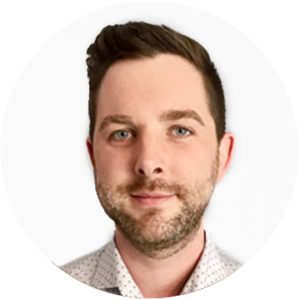 Jack Shore
Jack Shore
District Manager, UK & Scandinavia | REGENESIS
Jack is in charge of the UK and Scandinavian districts within REGENESIS. As part of this role, he manages a team providing technical support and design work to a mix of Design and Build Consultancies, Remediation Contractors and Blue-Chip Clients. Jack has over 10 years of experience within the remediation industry and most recently has successfully implemented the first injection of PlumeStop to effectively stabilise a PFAS plume in the EU. His experience ranges from supervising site investigations, developing in situ remediation designs, and managing large-scale remediation projects with multiple stakeholders.
Watch webinar recording
PlumeStop® Longevity for In-Situ PFAS Plume Treatment
In this webinar we were pleased to have as a special guest speaker Grant Carey, Ph.D., President of Porewater Solutions. His presentation discussed PlumeStop longevity for in-situ PFAS plume treatment. He was joined by Ryan Moore, PFAS Program Manager at REGENESIS, who discussed in-situ treatment of PFAS using colloidal activated carbon to eliminate PFAS risk at a low cost.
Highlights of this free webinar:
- Modeling the performance results of PFAS-impacted groundwater sites treated with colloidal activated carbon, including model runs to evaluate longevity sensitivity at AFFF sites
- How some of the design parameters may be engineered to improve longevity
- Several new research projects with the University of Waterloo, University of Toronto, and Carleton University to update the ISR-MT3DMS model functionality to improve our ability to model PlumeStop longevity for PFAS
View this free webinar
Proven Methods for Saving Time and Money Using In-Situ Activated Carbon Remediation
Date: Thursday, October 29th, 2020
Time: 11am pacific / 2pm eastern
Highlights of this free webinar:
The old adage ‘Time is Money’ has never been more relevant than it is today in the dynamic brownfield market. What if you could augment cost justification by evaluating mass removal data? Understanding mass removal at in situ activated carbon remediation sites is essential for evaluating open-ended treatment scenarios, such as passive barrier configurations; however, it can be difficult to discern mass removal from sorption. This webinar presentation takes the concept of saving both time and money in its real-world evaluation of in situ remediation using micron-scale activated carbon on a variety of sites. Practical techniques for assessing complete degradation where PlumeStop® activated carbon has been applied will be discussed and net trends of sorption versus treatment will be assessed at sites with a comparison to pump and treat scenarios.
- Understanding mass removal at in situ activated carbon remediation sites in order to evaluate open-ended treatment scenarios, such as passive barrier configurations
- Practical techniques for assessing complete degradation at PlumeStop activated carbon applied sites
- The powdered activated carbon (PAC)-based PRZ showed variable treatment.
- Assessment of net trends of sorption versus treatment will be assessed at several sites with a comparison to pump and treat scenarios
In this webinar we are pleased to have as a special guest speaker Matt Burns, Technical Fellow and the U.S. Contaminated Land National Service Line Director for WSP. His presentation will discuss proven methods for saving time and money using in situ activated carbon remediation. He will be joined by Maureen Dooley, Director of Strategic Projects at REGENESIS.
Sign up for this free webinar
The Evolution of Vapor Barrier Technology and Best Practices for Successful Vapor Barrier Implementation
Learn the following in this free webinar:
- The evolution of vapor barrier technology
- How vapor barriers originated from waterproofing materials, and now incorporate advanced formulations resulting in more protection for building occupants
- Strategies for successful vapor barrier implementation
- Methods to ensure a high-quality vapor barrier installation
In this webinar we are pleased to have a special presentation by Scott Wilson, President & CEO of REGENESIS and Land Science, and Ryan Miller, East Region Manager for Land Science. They will discuss the evolution of vapor barrier technology, as well as best practices for successful vapor barrier implementation.

 Americas
Americas Europe
Europe Français
Français Deutsch
Deutsch Italiano
Italiano Español
Español